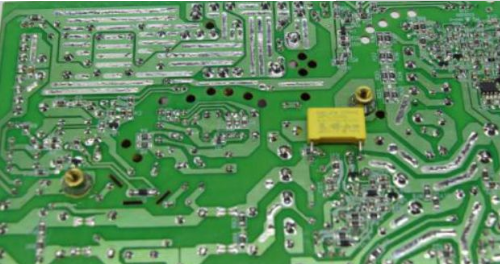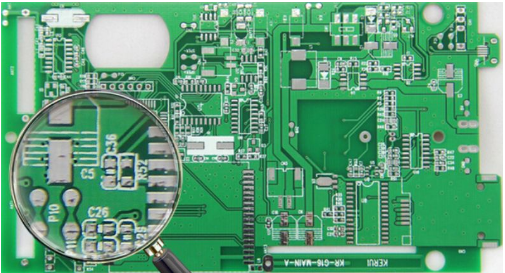
For electronic equipment, a certain amount of heat is generated during operation, so that the internal temperature of the equipment rises rapidly. If the heat is not released in time, the equipment will continue to heat up, the device will fail due to overheating, and the electronic equipment is reliable. Performance will drop. Therefore, it is very important to perform a good heat dissipation process on the board. The heat dissipation of the PCB board is a very important part, then what is the heat dissipation technique of the PCB board, let's discuss it together.
1. Through the PCB board itself, the widely used PCB board is a copper-clad/epoxy glass cloth substrate or a phenolic resin glass cloth substrate, and a small amount of paper-based copper-clad board is used. Although these substrates have excellent electrical properties and processing properties, they have poor heat dissipation properties. As a heat dissipation path for high-heat-generating components, it is hardly expected to conduct heat from the resin of the PCB itself, but to dissipate heat from the surface of the component to the surrounding air. However, as electronic products have entered the era of miniaturization, high-density mounting, and high-heating assembly, it is not enough to dissipate heat from the surface of a component with a very small surface area. At the same time, due to the large number of surface mount components such as QFP and BGA, the heat generated by the components is transferred to the PCB in a large amount. Therefore, the best way to solve the heat dissipation is to improve the heat dissipation capability of the PCB itself in direct contact with the heat generating components. Conducted out or emitted.
2, high-heating device plus heat sink, heat-conducting plate When there are a few devices in the PCB that generate a large amount of heat (less than 3), you can add a heat sink or heat pipe on the heat-generating device, when the temperature can not be lowered, A fan-mounted heat sink can be used to enhance heat dissipation. When the amount of heat generating devices is large (more than 3), a large heat sink (board) can be used, which is a dedicated heat sink customized according to the position and height of the heat generating device on the PCB board or a large flat plate radiator. The upper and lower parts of the different components are placed. The heat shield is integrally fastened to the component surface, and is in contact with each component to dissipate heat. However, due to the poor consistency of the components during welding, the heat dissipation effect is not good. A soft thermal phase change thermal pad is usually added to the component surface to improve heat dissipation.

3. For devices that use free convection air cooling, it is preferable to arrange the integrated circuits (or other devices) in a vertically long manner or in a horizontally long manner.
4, the use of reasonable routing design to achieve heat dissipation due to the poor thermal conductivity of the resin in the sheet, and the copper foil line and hole is a good conductor of heat, so increasing the copper foil residual rate and increasing the heat conduction hole is the main means of heat dissipation. To evaluate the heat dissipation capability of the PCB, it is necessary to calculate the equivalent thermal conductivity (nine eq) of the composite material composed of various materials having different thermal conductivity.
5. The devices on the same printed board should be arranged as far as possible according to their heat generation and heat dissipation. Devices with low heat generation or poor heat resistance (such as small signal transistors, small scale integrated circuits, electrolytic capacitors, etc.) should be placed. The uppermost flow (at the inlet) of the cooling airflow, a device that generates a large amount of heat or heat (such as a power transistor, a large-scale integrated circuit, etc.) is placed at the most downstream of the cooling airflow.
6. In the horizontal direction, the high-power devices are placed as close as possible to the edges of the printed board to shorten the heat transfer path; in the vertical direction, the high-power devices are placed as close as possible to the top of the printed board to reduce the temperature of other devices while these devices are operating

7. The heat dissipation of the printed board inside the device mainly depends on the air flow, so the air flow path should be studied during the design, and the device or the printed circuit board should be properly configured. When the air flows, it tends to flow in a place with low resistance. Therefore, when configuring the device on the printed circuit board, avoid leaving a large air space in a certain area. The same problem should be noted in the configuration of multiple printed circuit boards in the whole machine.
8. The temperature sensitive device should be placed in the lowest temperature area (such as the bottom of the device). Do not place it directly above the heating device. Multiple devices are preferably staggered on a horizontal plane.
9. Place the device with the highest power consumption and maximum heat generation near the best position for heat dissipation. Do not place higher heat generating components on the corners and peripheral edges of the printed board unless a heat sink is placed near it. When designing the power resistor, choose a larger device as much as possible, and have enough space for heat dissipation when adjusting the layout of the printed board.
10. Avoid the concentration of hot spots on the PCB, distribute the power evenly on the PCB as much as possible, and keep the temperature performance of the PCB surface uniform and consistent. It is often difficult to achieve a strict uniform distribution during the design process, but it is necessary to avoid areas where the power density is too high, so as to avoid the hot spots affecting the normal operation of the entire circuit. If necessary, it is necessary to perform thermal performance analysis of printed circuits. For example, the thermal performance index analysis software modules added in some professional PCB design software can help designers optimize circuit design.
